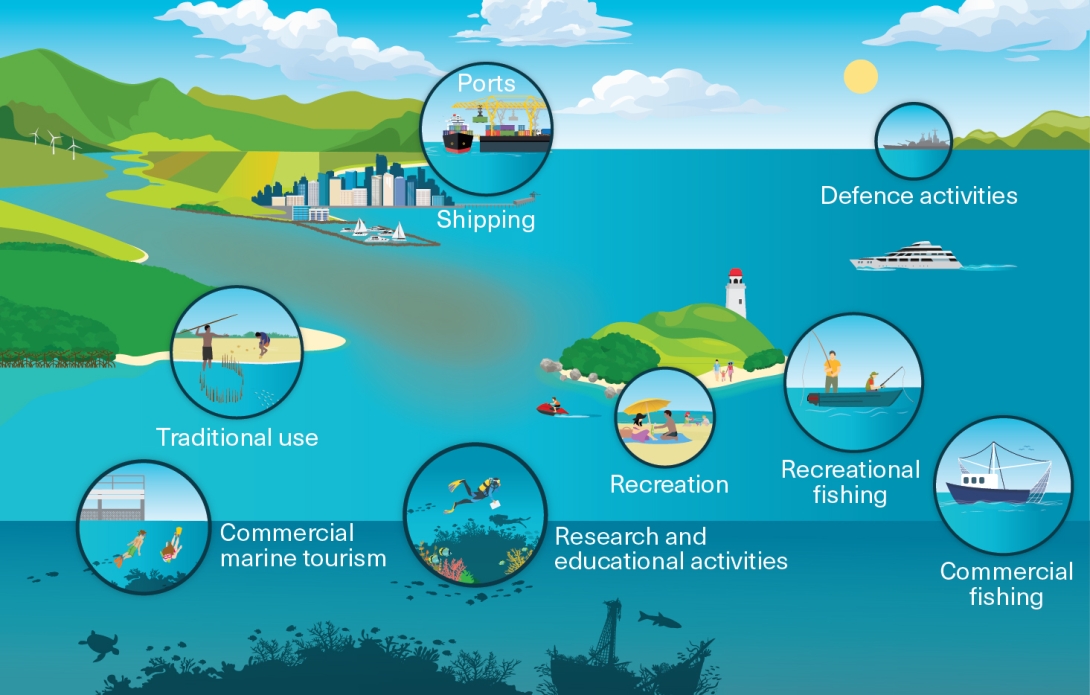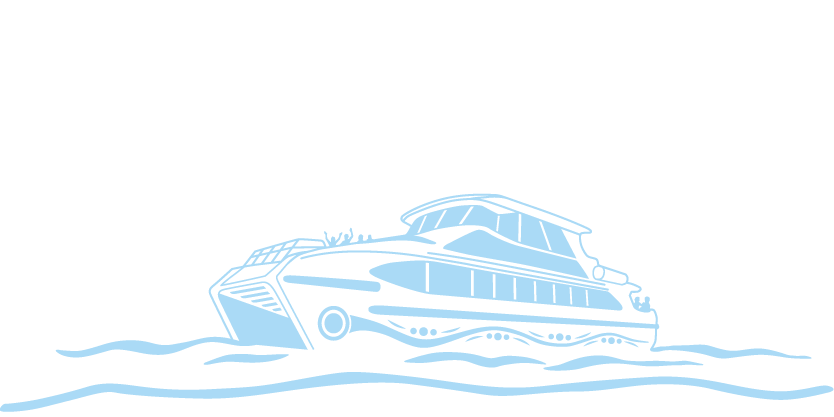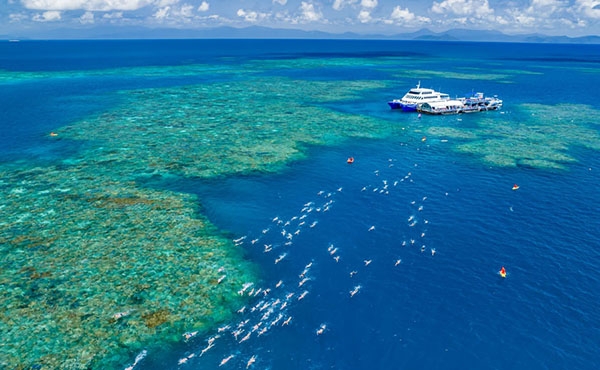For tens of thousands of years, the Region has been used by Traditional Owners through their continued connection to their Land and Sea Country and traditional use. Since European settlement, the use of the Region’s ecosystem has increased through a combination of direct commercial and non-commercial uses (Reef-dependent users) (Figure 5.1). The Region also supports non-Reef-dependent users who require access through (or to) the area, but do not directly use the natural heritage values of the Region.
Figure 5.1
Commercial and non-commercial uses
A range of uses occur in the Region; some depend directly on the Reef’s natural heritage values and resources.

This assessment of commercial and non-commercial uses examines the current condition (and trends in condition) of the major uses of the Region and forms the basis for the Chapter 6 assessment of direct use, a factor that influences the Region’s values (Section 6.6). The assessment is based on two assessment criteria:
- economic and social benefits of use
- impacts of use on the Region’s values.
For more than 40 years, government management plans and policies have had to balance the protection of the Region with the needs of communities and industries that depend on the Reef for traditional use, social and cultural purposes and livelihoods. Factors influencing the Region (Chapter 6) have changed and intensified over the years, increasing the challenge for management. Management has been, and continues to be, based on the best available scientific information and intergenerational knowledge. Chapter 7 assesses the effectiveness of management tools in more detail.
Use of the Reef contributes significant social and economic benefits
Commercial and non-commercial uses collectively form an important part of the social and economic fabric that supports the adjacent communities in the Catchment and the broader Australian and international communities. The economic and social benefits for each commercial and non-commercial use is considered in terms of its benefit to the community and the natural ecosystem more broadly.
All commercial and non-commercial uses, Reef-dependent or not, have the potential to conflict with the long-term protection, conservation, and function of the Reef’s natural and Indigenous heritage values. Well-managed uses can also lead to positive outcomes, including through conservation education. Therefore, management of these uses is factored into the assessment of their potential impacts.
Tourism, fishing, other recreational use and scientific activities contribute significantly to the Australian economy. However, between 2020 and 2022, management of the COVID-19 pandemic affected each use. There has not been an updated quantitative estimate of the economic values across and between the commercial and non-commercial uses of the Region since 2017.


